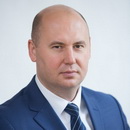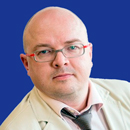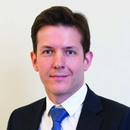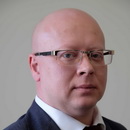ABOUT
FUTURE ORTHOPEDICS: NANOTECHNOLOGY AND AI
Bone fractures, osteoarthritis and other skeletal tissue pathologies are among the most common age-related diseases and lead to a significant loss of patient mobility [doi: 10.4317 / jced.56582]. The development of new biomedical materials, smart technologies and innovative approaches to early diagnosis, including the use of artificial intelligence technologies, which prevent trauma and / or accelerate regeneration processes, improve the patient's quality of life. This is especially relevant in the context of the development of the “Active aging” paradigm [https://doi.org/10.1016/B978-0-08-102451-5.00011-1] and the introduction of a personalized approach to therapy into clinical practice

Organizer — Sechenov University
Federal State Autonomous Educational Institution of Higher Education I.M. Sechenov First Moscow State Medical University of the Ministry of Health of the Russian Federation (Sechenov University)
Organizing Committee
Organizing committee of the symposium

Denis Butnaru
MD, PhD, Vice-rector for Research, I.M. Sechenov First Moscow State Medical University (Sechenov University)

Prof. Petr Timashev
D.Sc., Head of the Sechenov Biomedical Science & Technology Park, Director of the Institute for Regenerative Medicine, I.M. Sechenov First Moscow State Medical University (Sechenov University)

Prof. Elizaveta Kon
Humanitas University. Istituto Clinico Humanitas IRCCS · Knee biological and Functional Reconstruction Center Doctor of Medicine

Prof. Xing-Jie Liang
Deputy Director of the Laboratory of Biological Effects of Nanomaterials and Nanosafety, National Center for Nanoscience and Technology, Beijing

Dmitry Telyshev
PhD, Head of the Institute for Bionic Technologies and Engineering, I.M. Sechenov First Moscow State Medical University (Sechenov University)

Alexey Lychagin
D.Sc., Head of Traumatology, Orthopedics and Joint Pathology Clinic, head of Traumatology, Orthopedics and Emergency Surgery Department, head of Traumatology Department of Sechenov University, Moscow, Russia
Third Russian-Chinese Symposium
“Future Orthopedics:
Nanotechnology and AI”
09.11.2023
9:00-11:15
Third Russian-Chinese Symposium “Future Orthopedics:
Moderator: Peter Timashev, Sechenov University, Moscow
09:00-09:15
Opening
Plenary session
09:15-09:45
p53 based oncotherapy
Prof Fangzhou Li
09:45-10:15
Tumor microenvironment-responsive nanoparticle overcome immune tolerance
Prof Yong Chao Wang
10:15-10:45
Aggregation-Regulated Excited State Dynamics in Nanotheranostics
Prof Mengliang Zhu
10:45-11:15
Engineered Nanomaterials for rheumatoid arthritis
Prof Weisheng Guo
11:15-11:35
Coffee break
11:35-13:00
Third Russian-Chinese Symposium “Future Orthopedics:
Nanotechnology and AI”
Moderator: Peter Timashev, Sechenov University, Moscow
11:35-11:45
Laser 3D printing of albumin strengthened with carbon nanotubes and its conjugates for tissue engineering applications in orthopedic
Michail Savelyev
11:45-11:55
Development and Research of Composite Coatings for Effective Inhibition of Thrombosis Formation
Kristina Popovich
11:55-12:05
Magnetic nanosystems for magnetically mediated delivery in osteoarthritis
Gevorg Galechyan
12:05-12:15
Laser-formed bioelectronic nanointerfaces based on carbon nanotubes and biopolymer
Uyana Kurilova
12:15-12:25
Development of a system for medical decision support on selection of laser radiation characteristics and composition of laser solder for laser reconstruction of biological tissues
Victoria Suchkova
12:25-12:35
Non-invasive control of magnetic nanoparticles In a biological mendium
Levan Ichkitidze
12:35-12:45
Collagen matrix in the reconstruction of the anterior cruciate ligament
Raikov Bogdan
12:45-12:55
Fabrication of Biomimetic Meniscus Scaffold by 3D Printing. Our experience and future perspective
Kudrachev Tagir
12:55-13:00
Discussion
13:00-14:00
Coffee break
14:00-15:10
Third Russian-Chinese Symposium “Future Orthopedics:
Nanotechnology and AI”
Moderator: Peter Timashev, Sechenov University, Moscow
14:00-14:10
Optical methods in the diagnosis of pathology of the cruciate ligaments of the knee joint
Azarkin Kirill
14:10-14:20
Supplying of non-woven membranes in chondral and osteochondral defects replacement (experimental research)
Belov Nikita
14:20-14:30
Advancements in Cartilage Study: Diffuse Reflectance Spectroscopic Techniques in the Fourth Optical Window
Denisenko Georgy
14:30-14:40
Regulation of inflammatory and radical-producing activity of phagocytes by extracellular vesicles
Klyucherev Timofey
14:40-14:50
Photobiomodulation as a tool for metabolic activity stimulation of MSCs in 3D bioprinted constructs
Bikmulina Polina
14:50-15:00
The effect of different types of extracellular vesicles on the functional activity of cells
Revokatova Daria
15:00-15:10
Comparison of Liquid-Phase and Matrix-Bound Extracellular Vesicles in 2D and 3D Cell Cultures
Alexander Korneev
General Partner

